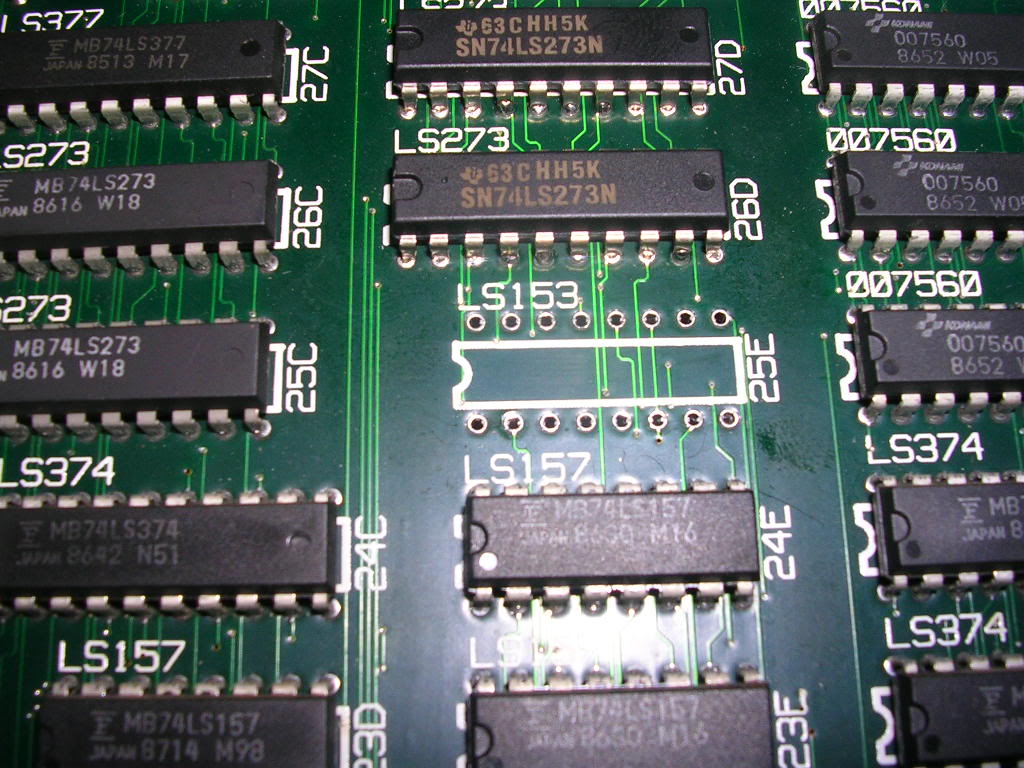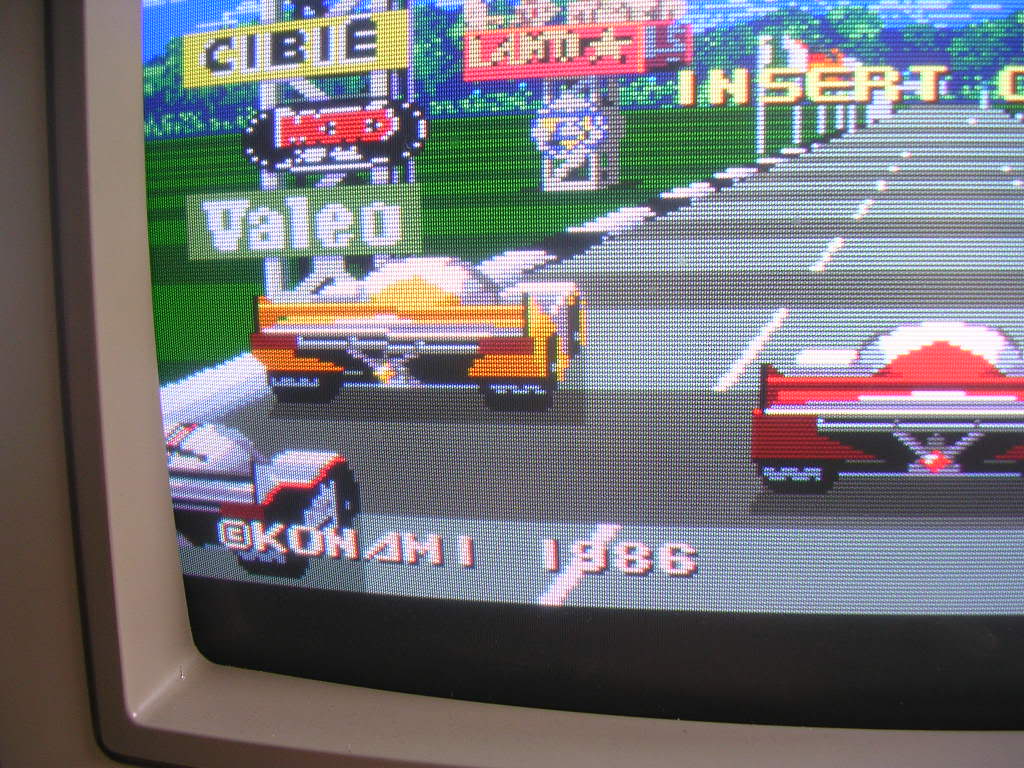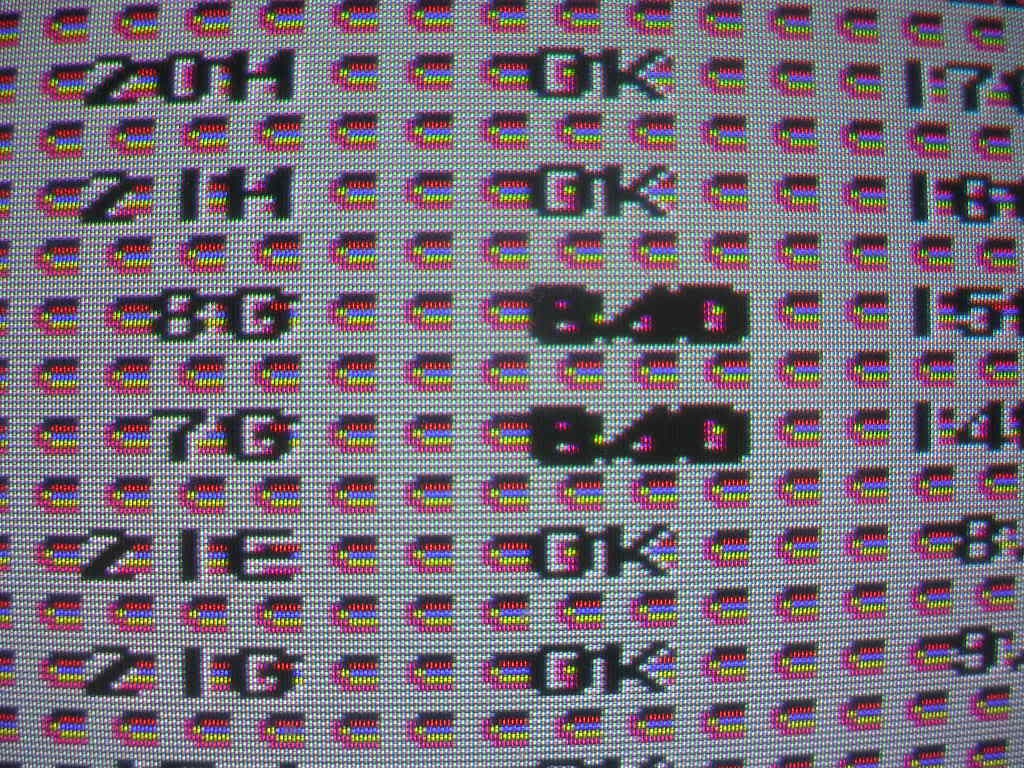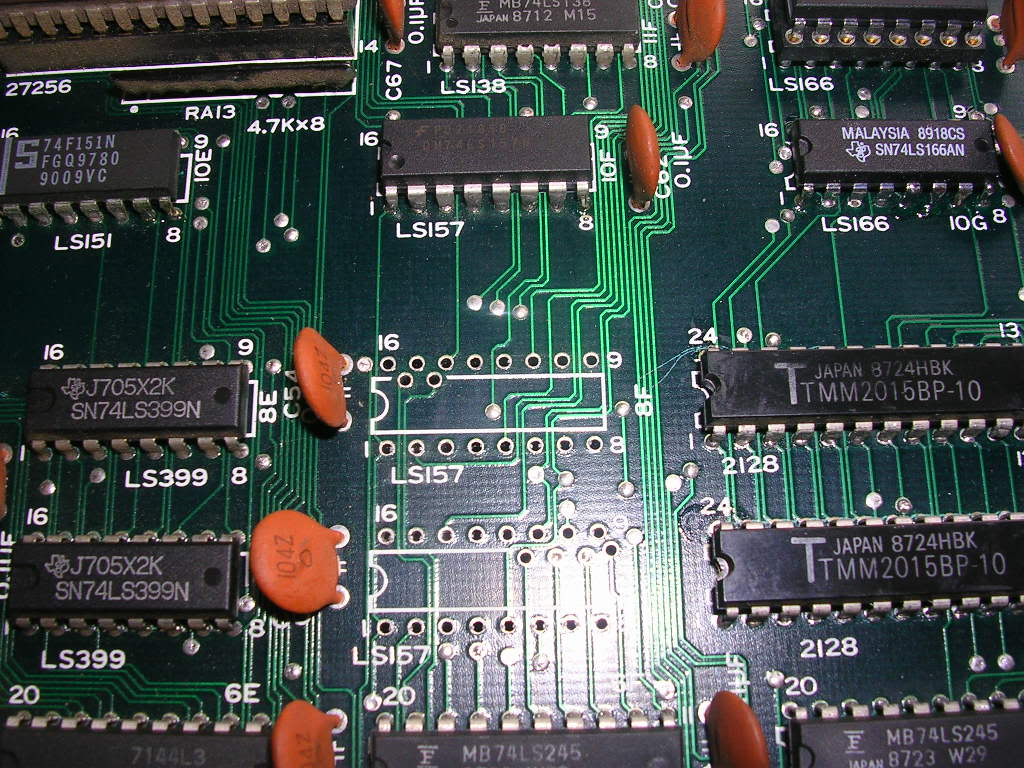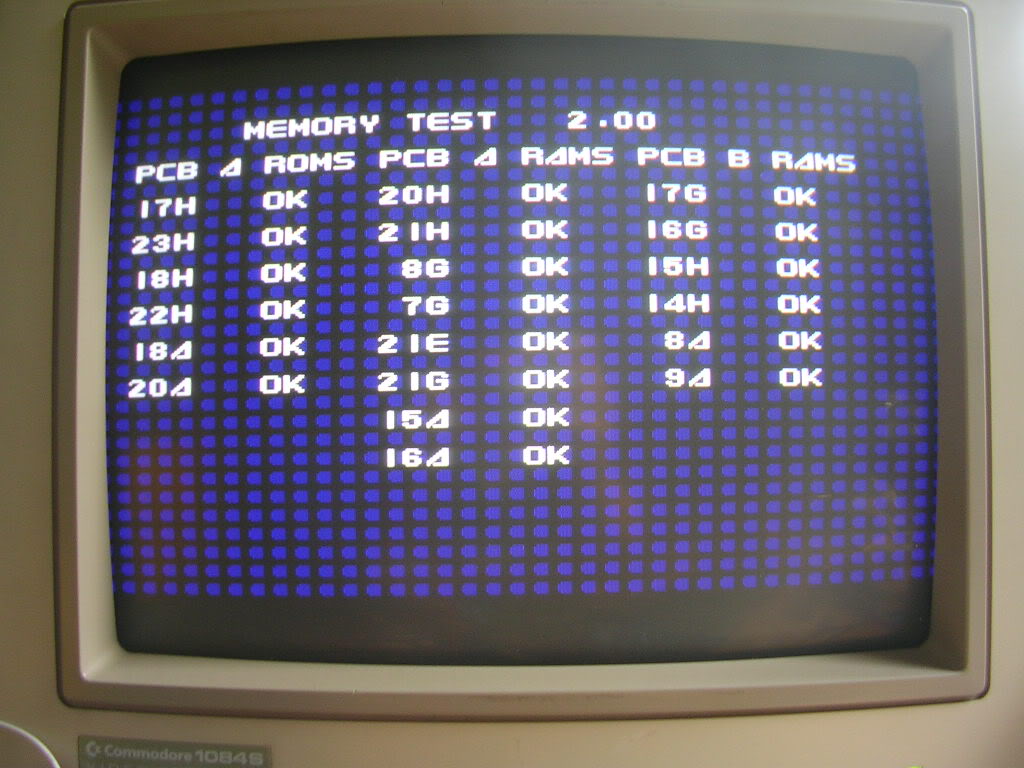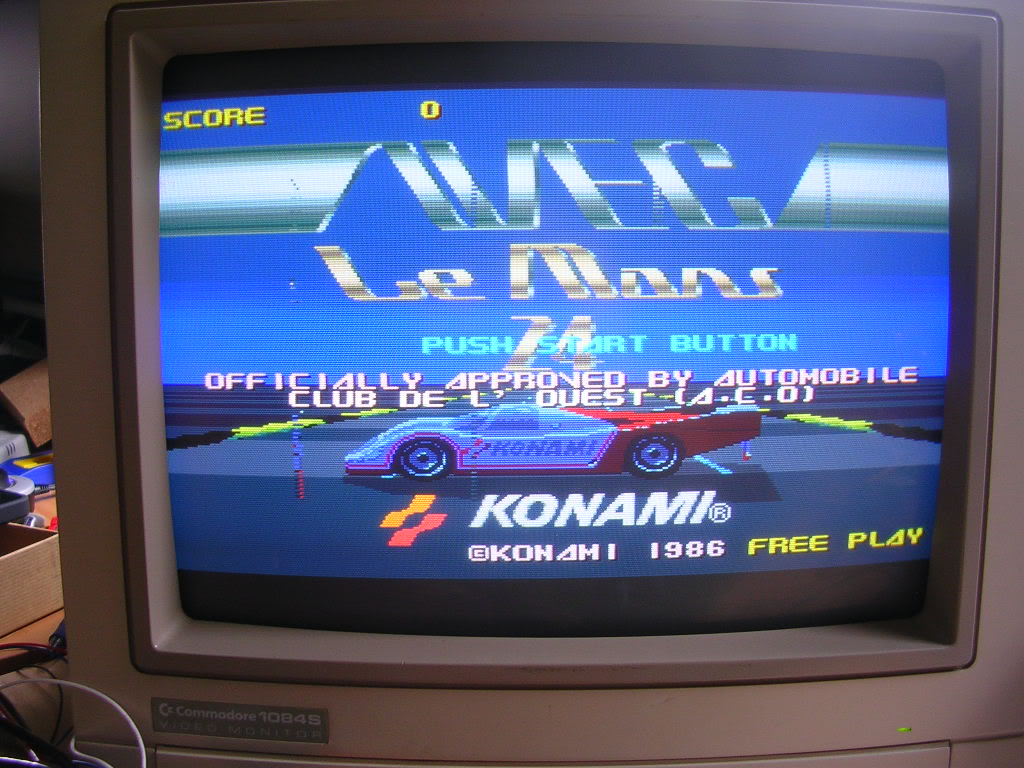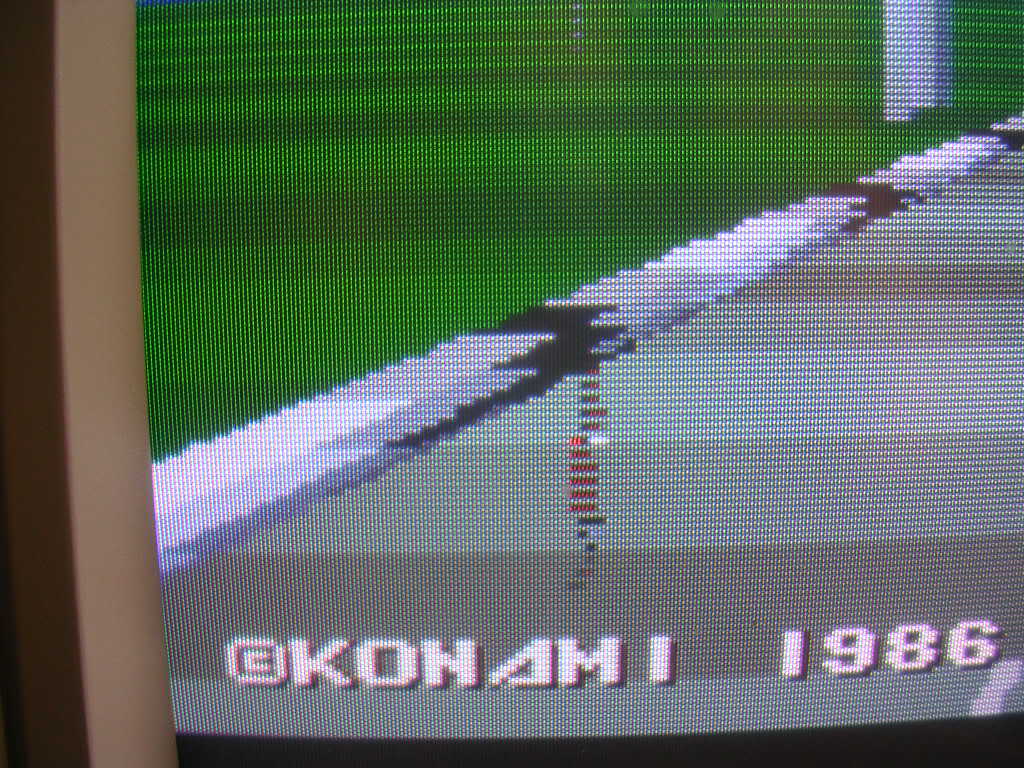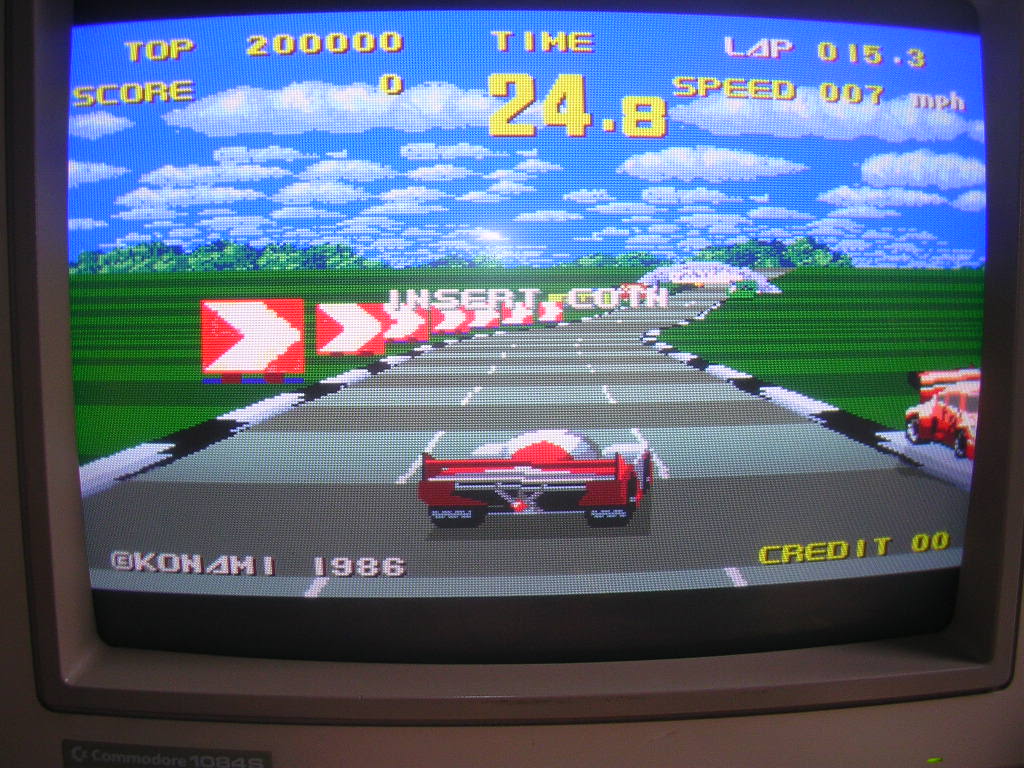PCB Repair Logs Wec Le Mans 24
Wec Le Mans 24
 |
|
| PCB Image | Reserved |
|---|---|
| Pin Out | Reserved |
Board 1
Repairer: Womble
Forum Thread: Wec Le Mans 24 PCB Repair
I fixed this board for Scratcha years ago, he has since sold the cabinet to Genie, whose daughter loves the game until it died on her mid race. The game apparently locked up and gave the following screen...
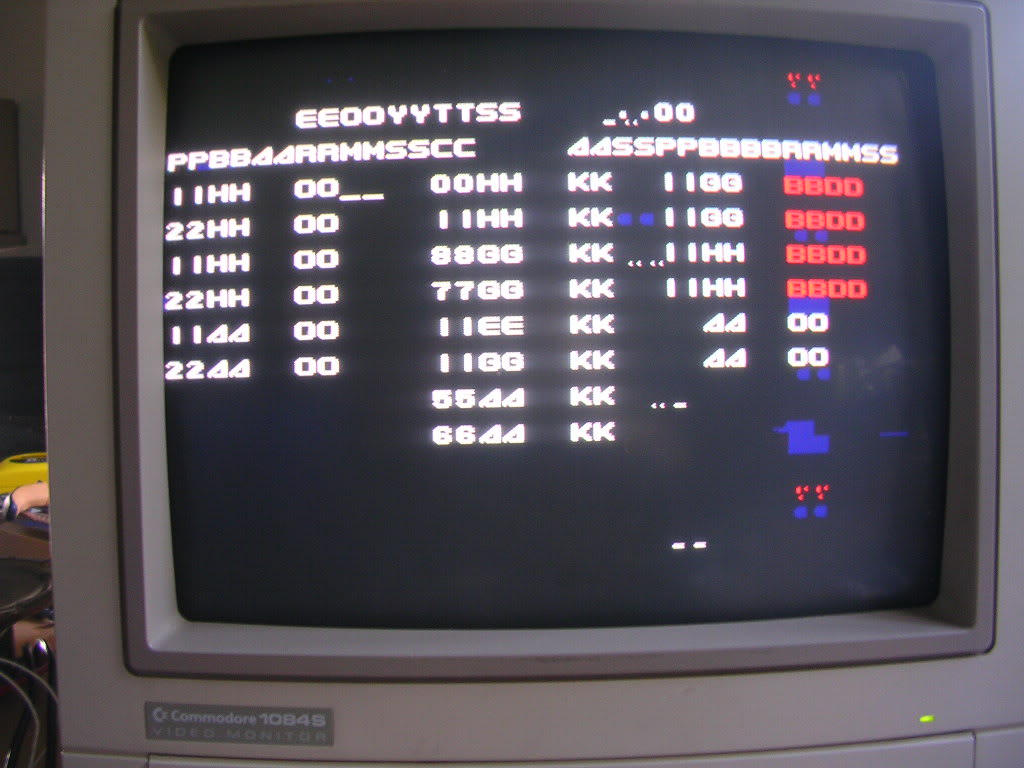
...which stays on the screen for about 5 seconds until the game resets itself, rinse and repeat.
Having met this board before I know it is peppered with Fujitsu TTL chips, hundreds of them. All the faults originally were bad Fujitsu TTLs so I guessed it had lost some more. I was expecting it to just be one, but in fact there were a few. The 74LS07 at 17E was missing all its outputs but replacing that did not have any effect with the board in its current state. I had quickly gone over the board with the logic probe looking for the tell tale signs of bad Fujitsu TTLs - floating outputs but aside from the LS07 there were none.
The simplest option is to resort to using my logic comparator for 14 and 16 pin ICs, as input pins that are disconnected internally leave the chip doing the wrong thing but looking like it is getting the correct signals externally. this threw up a number of 74LS174s as having bad timing so about 8 of those across both boards got replaced, again with no effect. Setting up the comparator for each chip type is pretty boring so I idly decided to dump the mask ROMs on the CPU board, and found the ROMs at 17H and 23H were bad, they dumped but their contents did not match the MAME set, the ones at 18H and 21H did. So a couple of 27c512s had the correct contents programmed and they were installed, no change.
Back to the logic comparator and after going through a dozen or so chip types I got round to the 74LS153s and found the one at 25E had both its outputs stuck low...
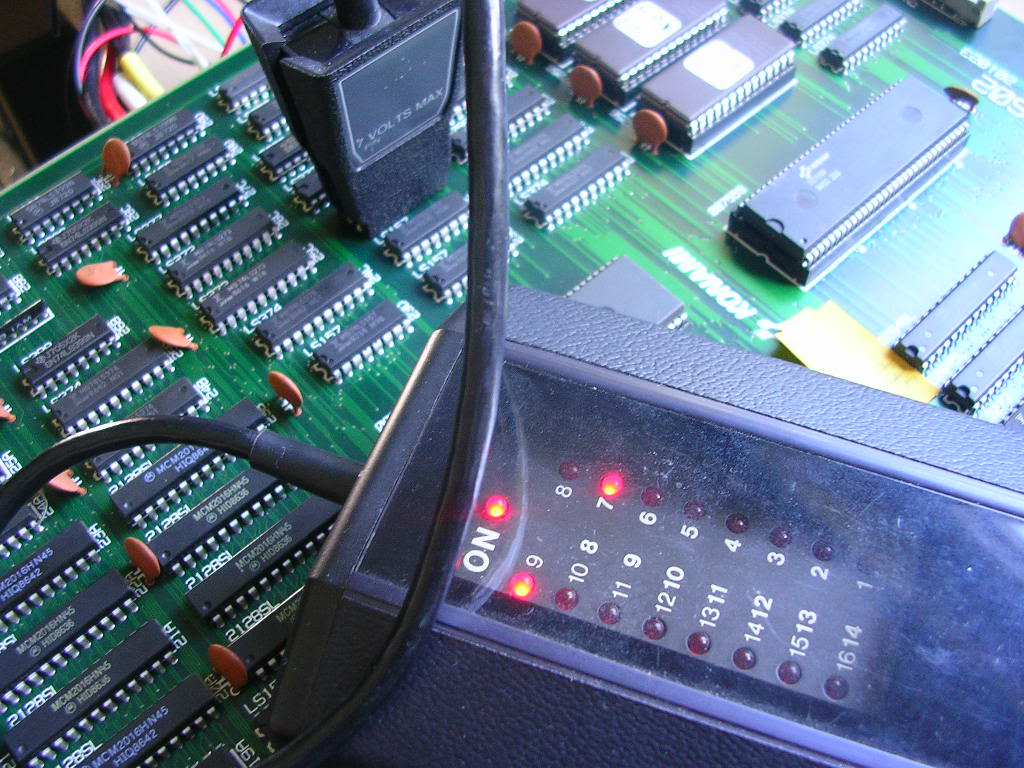
... piggy backing a good one had no effect as it was presumably shorted internally to ground.
and a Hitachi LS153 was installed. Where possibly I always use Hitachi TTLs salvaged from scrap as I have never actually met a dead one on any board, and its not like they are an uncommon make either, very robust chips I reckon!
Anyway - new chip in, power on and....
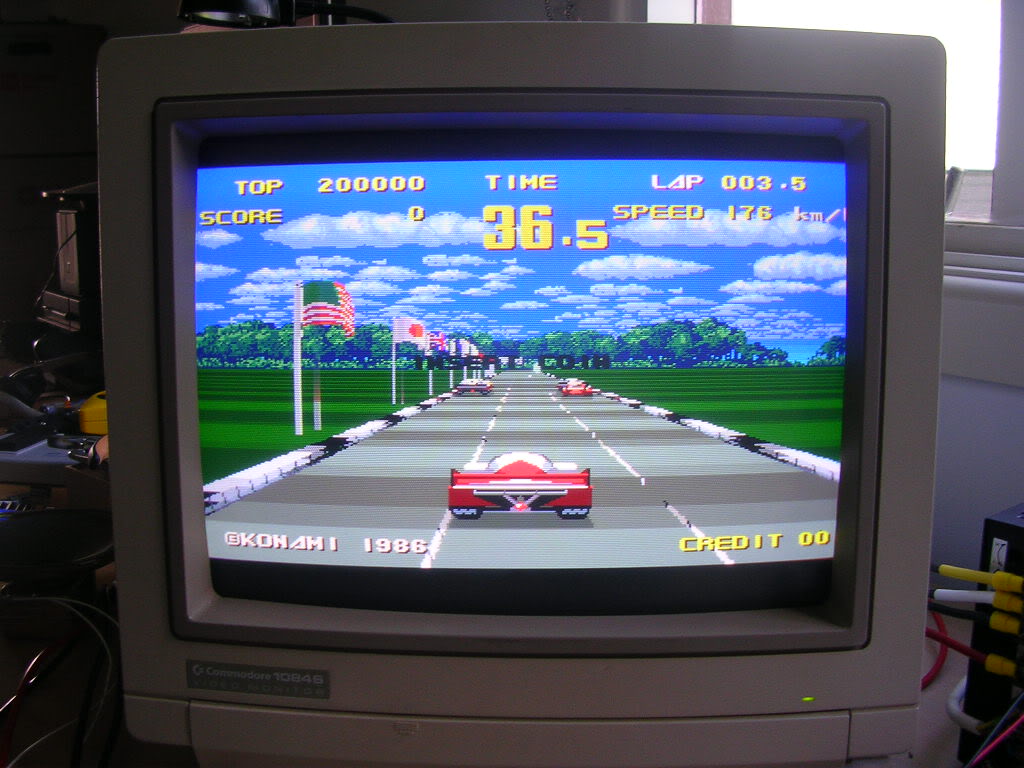
...shes back!
Not quite 100% yet tho, there is glitching in the kerb detail and the road markings...
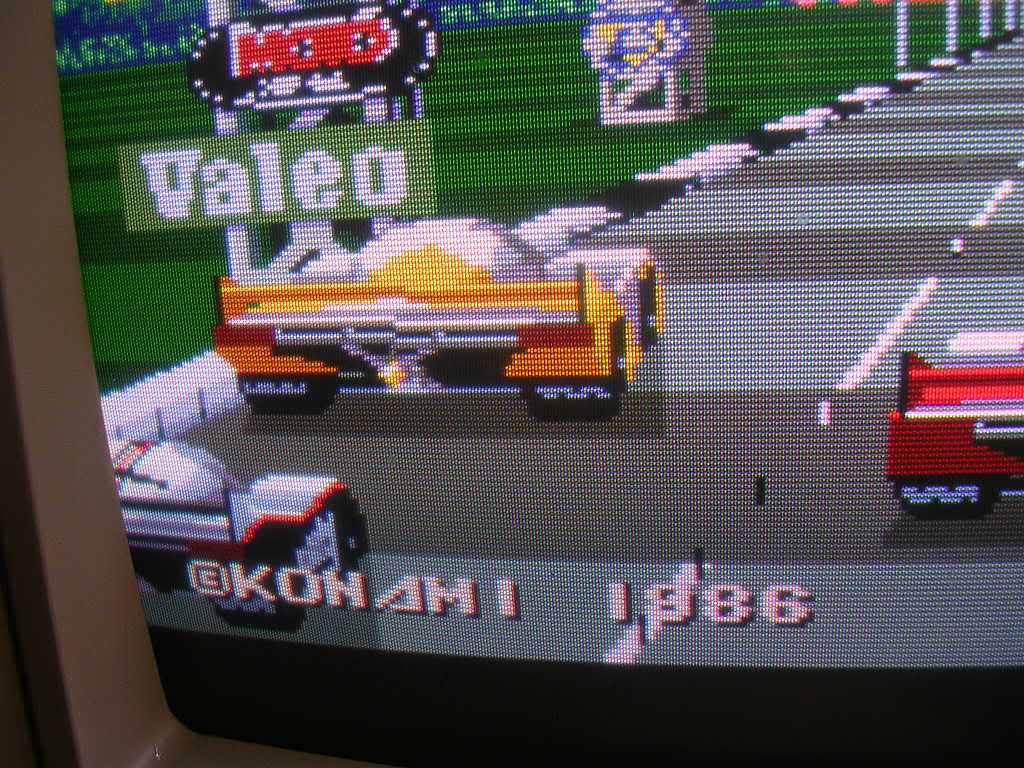
... the black lines in the white sections of kerb, and the black bars in the gaps between the white road markings should not be there! When I originally fixed this there was a fault where the road markings were completely missing and I tracked this to a trio of LS166s on the CPU board, one of which was totally shot before.
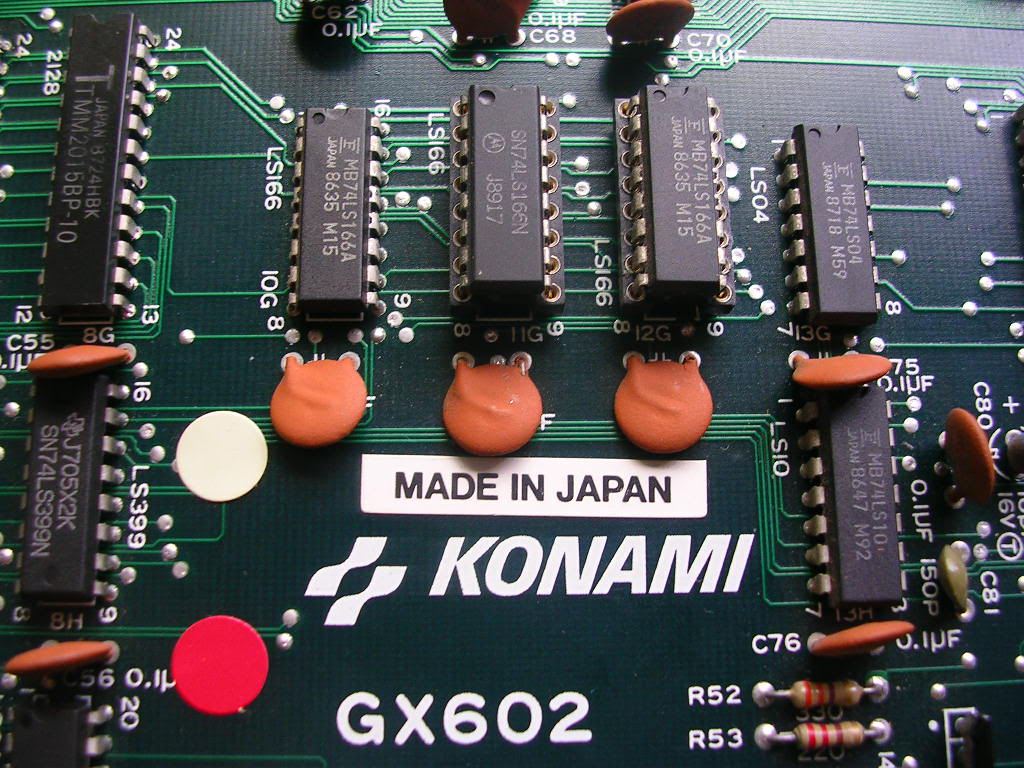
I vaguely remembered struggling to find a replacement chip at the time as 166s are not common at all on arcade boards. This was clearly an early repair of mine as I gave up installing sockets for TTL replacement chips quite early one. Partially because I was chewing through a lot of sockets and also as when you have a desolder station the main benefit of being able to get the chip off again is never a problem. I pinched the Motorola chip, tested it on my EPROM burner and then used it as the comparator source, which showed that the LS166 on the right of the three was giving errors on its output. Judging by the fault and the comparator error I would say it has actually lost one of its input legs internally so the output pattern is missing the feed from that pin. The chip although socketed is probably the original one from the board as its marking match the original one on the left, I never put Fujitsu TTLs back on the board if I can help it but originally I could only find a single 166 to fix the dead one, and today the only scrap board I have with 166s uses... yep - Fujitsus.
So it had to be a Fujitsu again, not sure what the white square on the chip denotes, possibly "pin 1", havent seen or noticed that before.
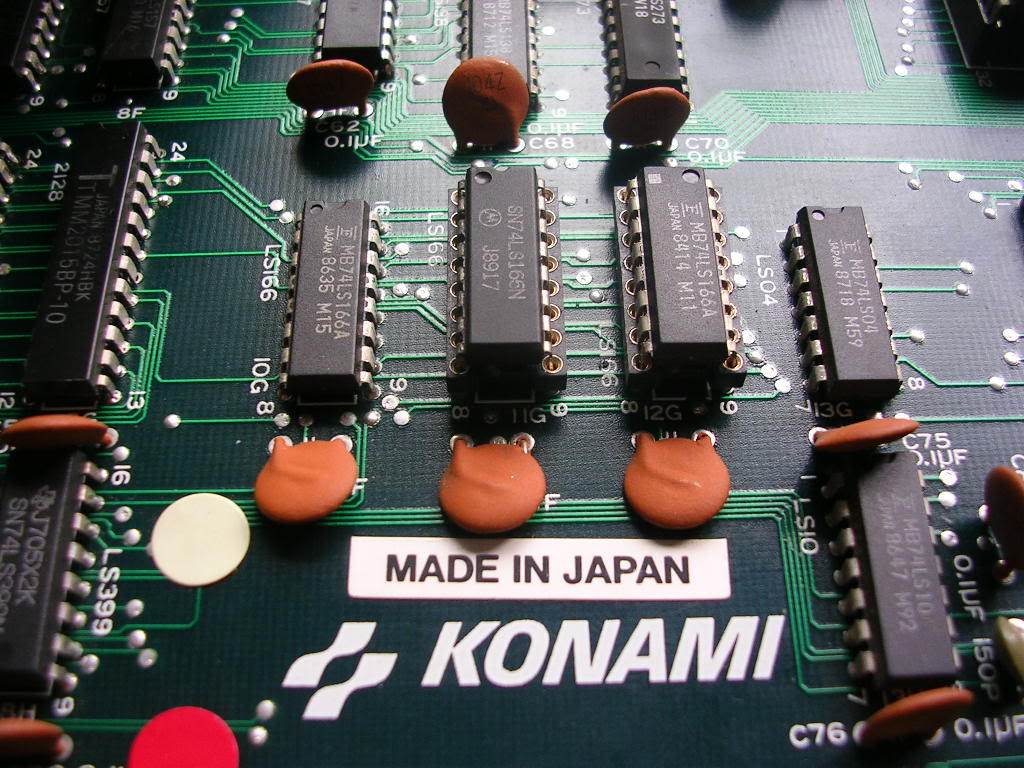
...all road faults gone.
One weird thing with this board is that it is a two board set, with three 50 way ribbon cables connecting the two board, but the lower board does not get its power from the upper board where the JAMMA connector is, as is the case in every other board set I have ever met. It seems that it takes its power from the steering mechanism in the cabinet as there are no pinheaders for a power feed on this board. To work on this outside the cabinet you have to solder a power feed to the board, the simplest place is to the smoothing electrolytic cap in the corner, its a pain but it works.
UPDATE - found a tube of new 74LS166 chips while looking for something else, so have whipped the last remaining original Fujitsu 166 off the board, and replaced the two in sockets so there is a set of 3 new ones.
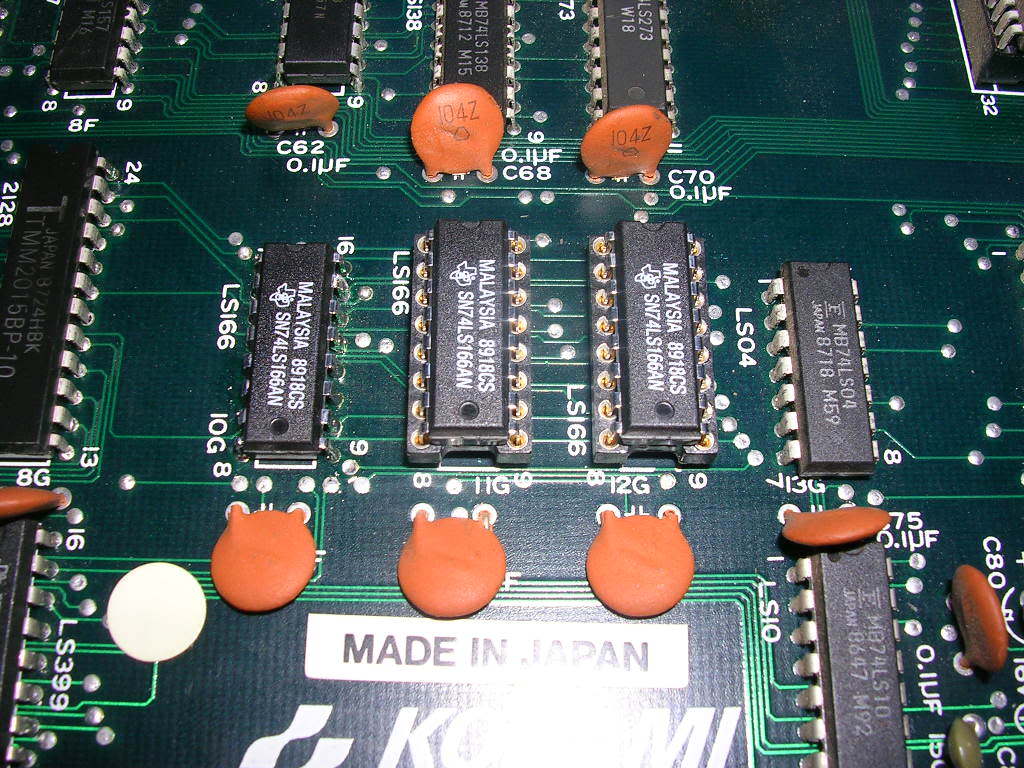
They are probably ones I bought after struggling to find a single one for the fix back in 2008/2009, ironic that they have ended up on the same board.
Board 2
Repairer: Womble
Forum Thread: Wec Le Mans 24 PCB Repair
Had Troy's Wec Le Mans board back on the work bench this arvo. This board is a regular guest, I think this is its 5th visit to my place all up in the last 3 years. Every time the culprit is the same - Fujitsu TTL chips, its rammed with them and they are the bane of arcade collectors these days. All chips will one day fail due to age and Fujitsu TTLs seem to have won the race and are now dropping like flies, the last time I had it here I found faults that lit up features Troy didn't even know he was missing due to bad Fujitsu logic. All was good for a month or two and then the dreaded "BAD" results on bootup...
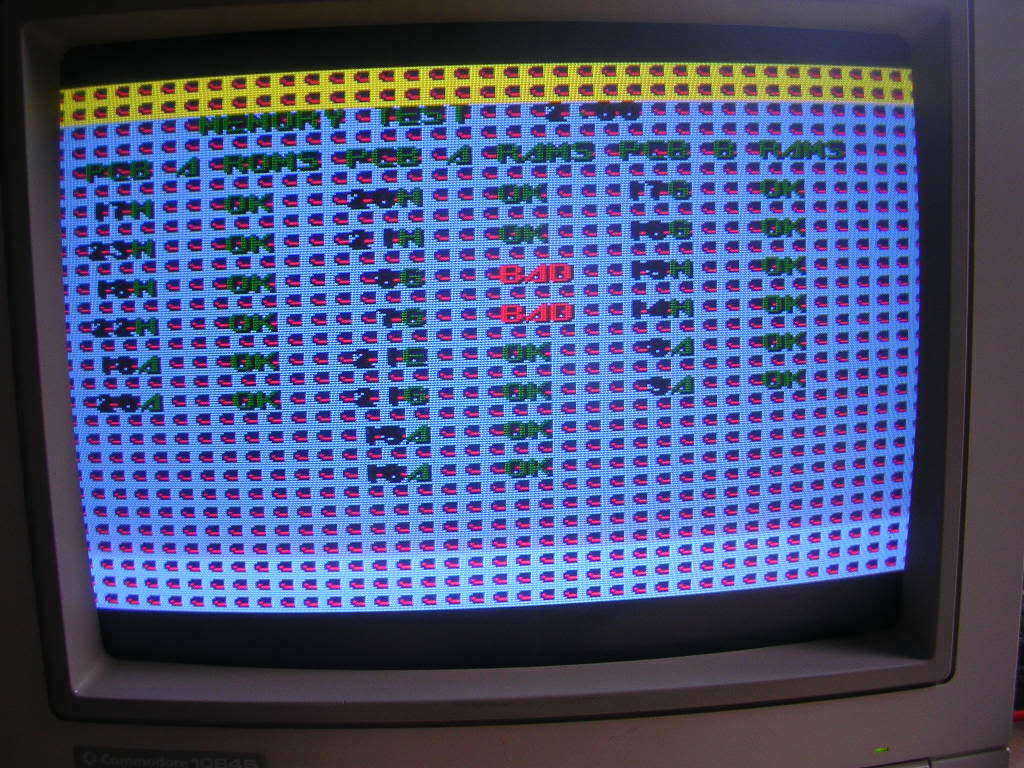
This fault is available in many colour options folks!
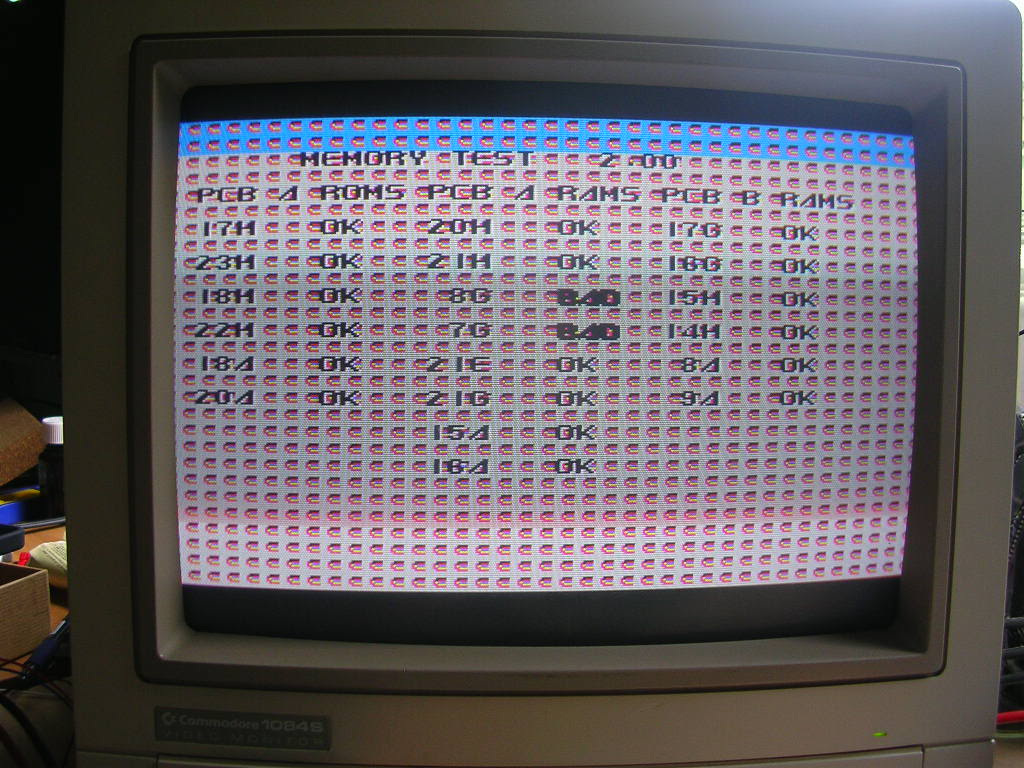
I made a bet with Troy when he dropped it off that the fault would probably be the 74LS157s (7F and 8F) next to the two TMM2015-10 SRAM chips that are getting flagged as bad.
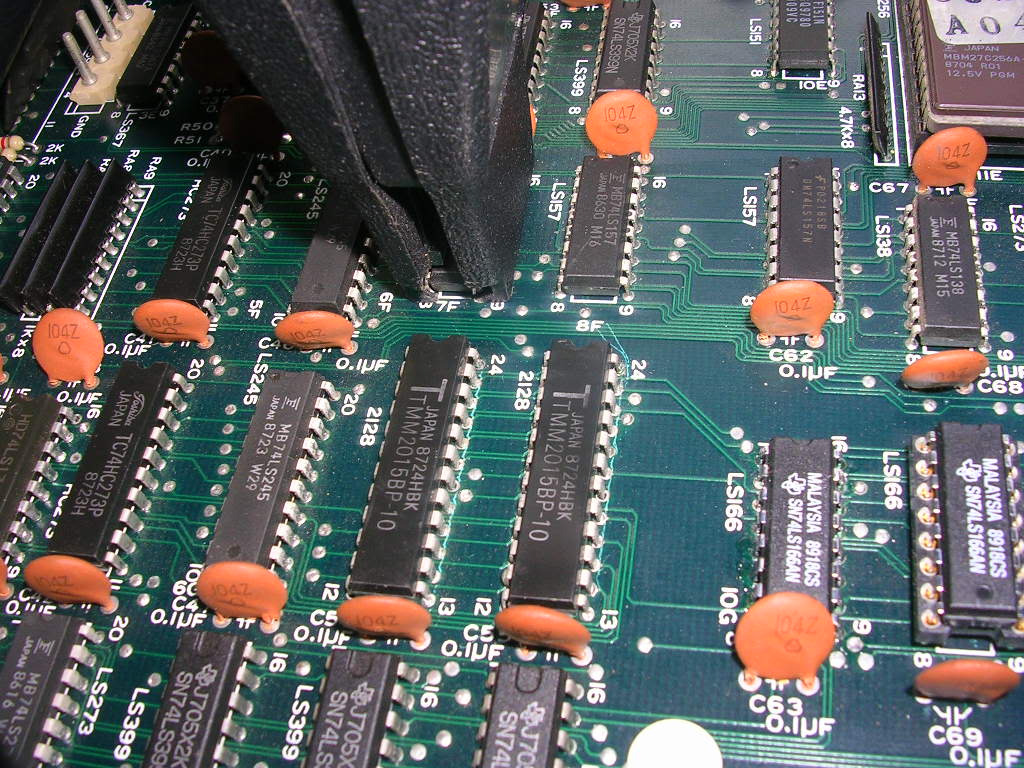
Sure enough the 7F (the one with the test clip on it) was showing as bad, but only very briefly, once when the board reset and at two other brief moments during the boot sequence. I had seen the exact same transient fault waaaaay back when Scratcha was the owner and again that was bad 157s, which caused the pair of TMM2015-10s at 15A and 16A to show up as bad.
... and a couple of Hitachi 157s went in their place.
... she lives again. Well almost, there is another fault showing up, the line of corruption to the left of the car, it actually affects all sprites equally but the cars are the biggest ones so their corruption is the more obvious...
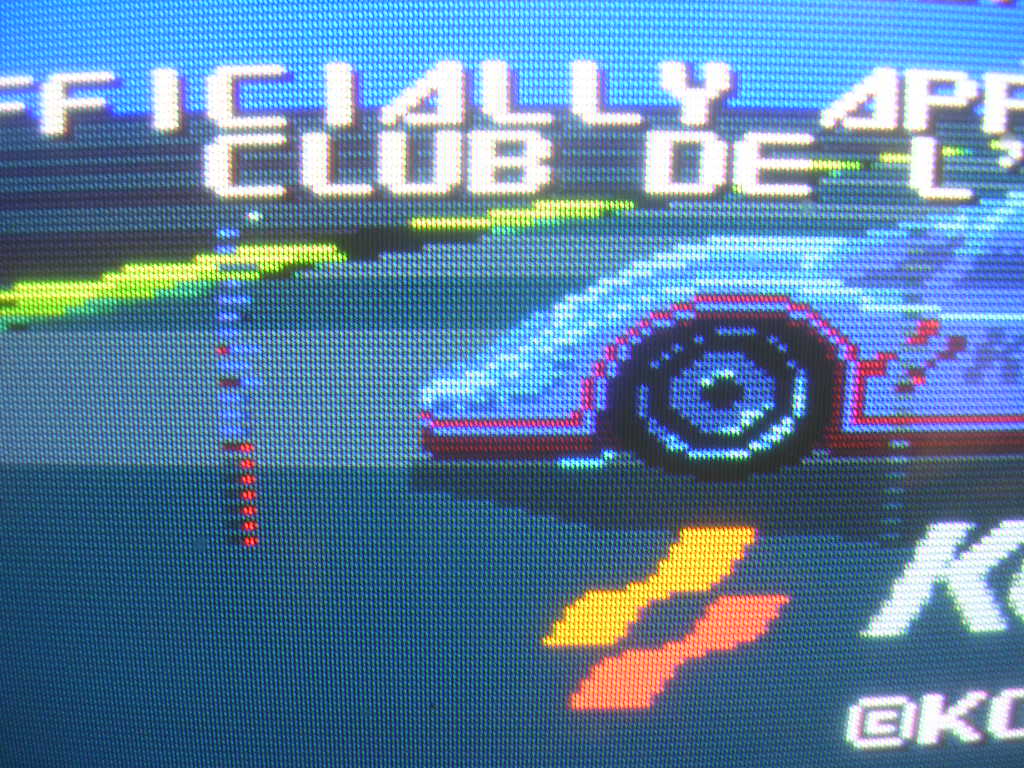
... the title graphics also have the same effect.
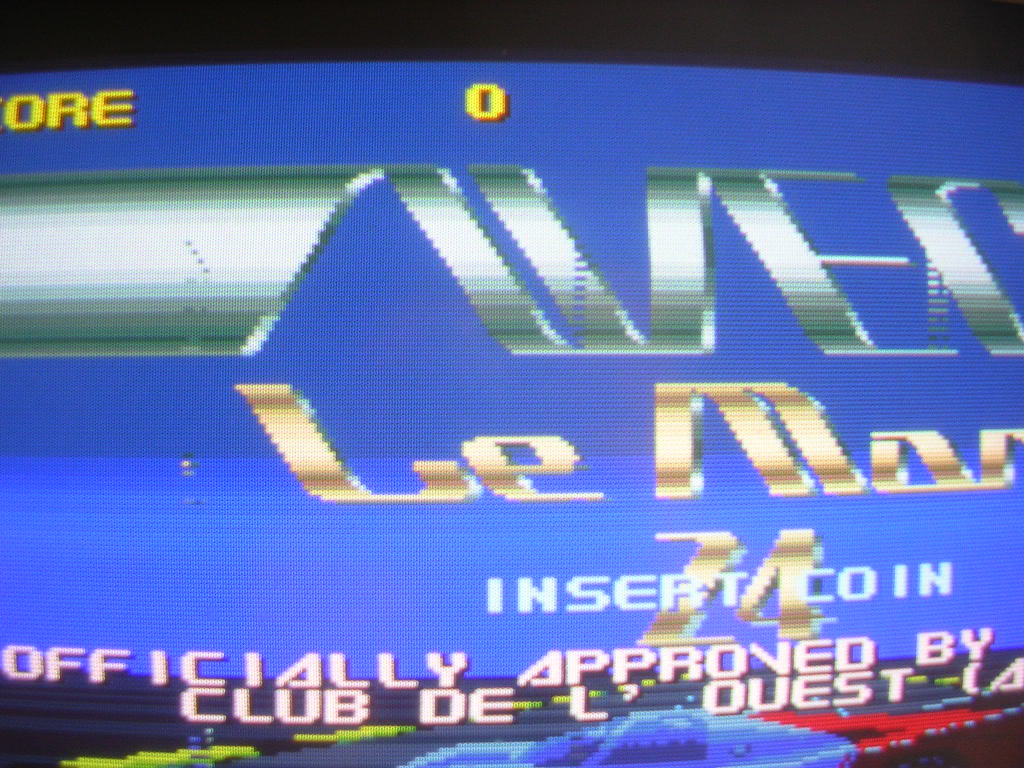
This fault was most likely to be on the video board so I flipped the board over and went looking for the sprite generation area. A quick short out of some address lines on the SRAMs showed which area was doing the sprites, when I jammed the address lines in that area all the sprites went nuts.
Surprise surprise the fault was another 74ls157, the last original one in that area of the board.
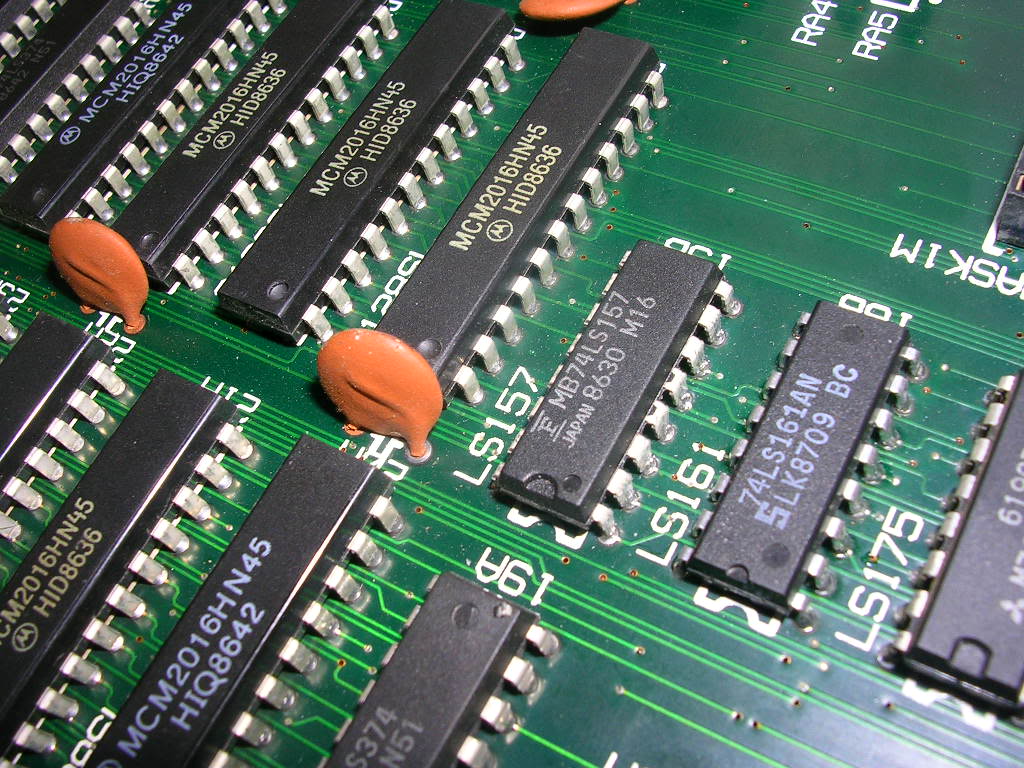
Its outputs looked fine on the scope but pin 7 was wrong 100% of the time so it is likely it has lost an input pin, to the outside world the chip looks like it is getting the signal on whatever pin it has lost. The metal of the leg still has that signal on it but it no longer connects up inside the chip body - so whatever the chip is doing is wrong even if it looks healthy. Dropping in another Hitachi replacement fixed the issue completely.
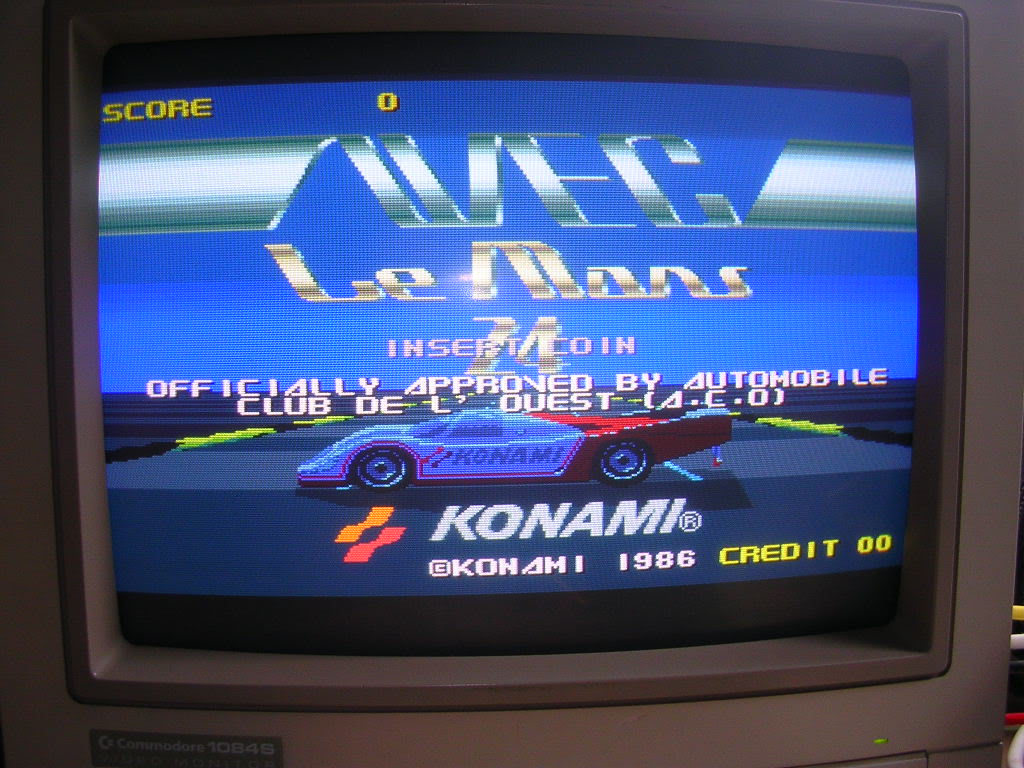
At this point I decided to bite the bullet and scrap all the old Fujitsu 157s on the board, on previous repairs I had replaced over half the originals piece-meal as they failed, so it is extremely likely that the others were all approaching the point where they too would fall over, probably one by one over the next 5 years.
Replacing chips en-masse is a fairly time consuming work if you are not using new stock chips, the replacements all came off scrap boards so to replace a single chip of 16 pins takes 2x 16 pin solders (to wet the pins on the old and the new chip prior to desolder), 2x16 desolder steps (to get them both off the board), a test of the spare chip to confirm it is not already dead (there's a reason the boards are scrap) and a 1x16 solder to get the replacement chip on the board. You also often have to resolder pins that won't clear at the desolder stage and then take a second pass with the desoldering iron to get the leg completely disconnected. All up its about 5 minutes per chip so this took about an hour.
So the remaining 157s came off the CPU board, and just out of curiosity I fired up the board to see what the result would be...
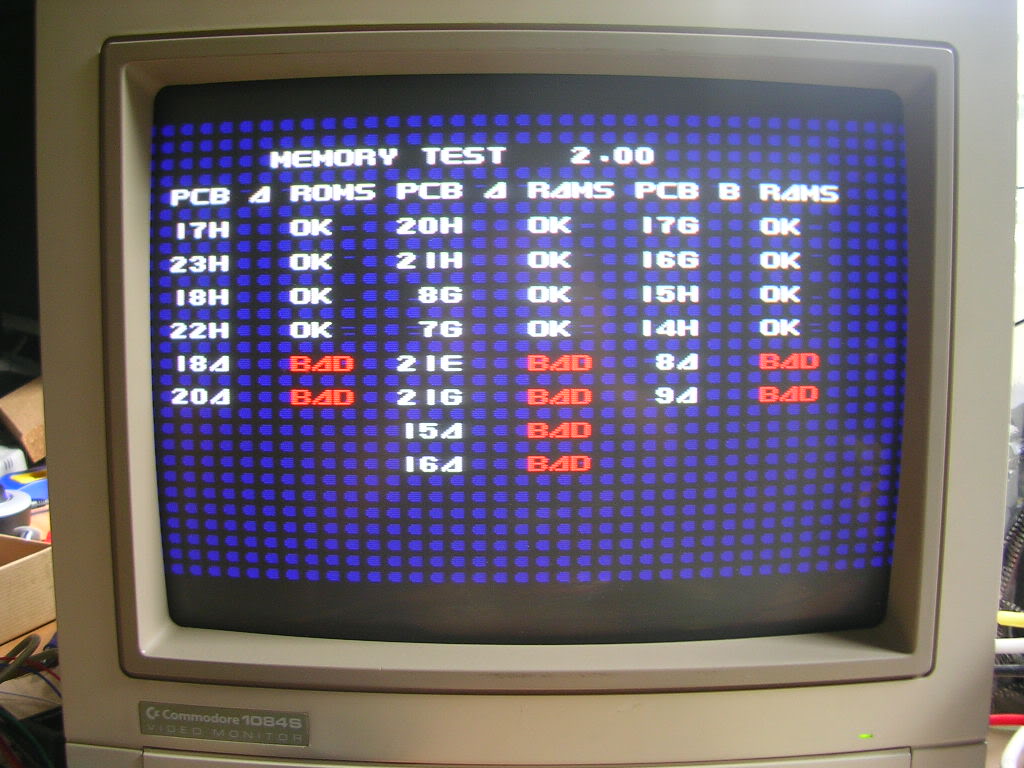
... so that's a fault that Troy hopefully wont get to see as a result of this cull.
Plus another handful from the video board which clearly are involved in the sprite system as this is the result when they are not present...
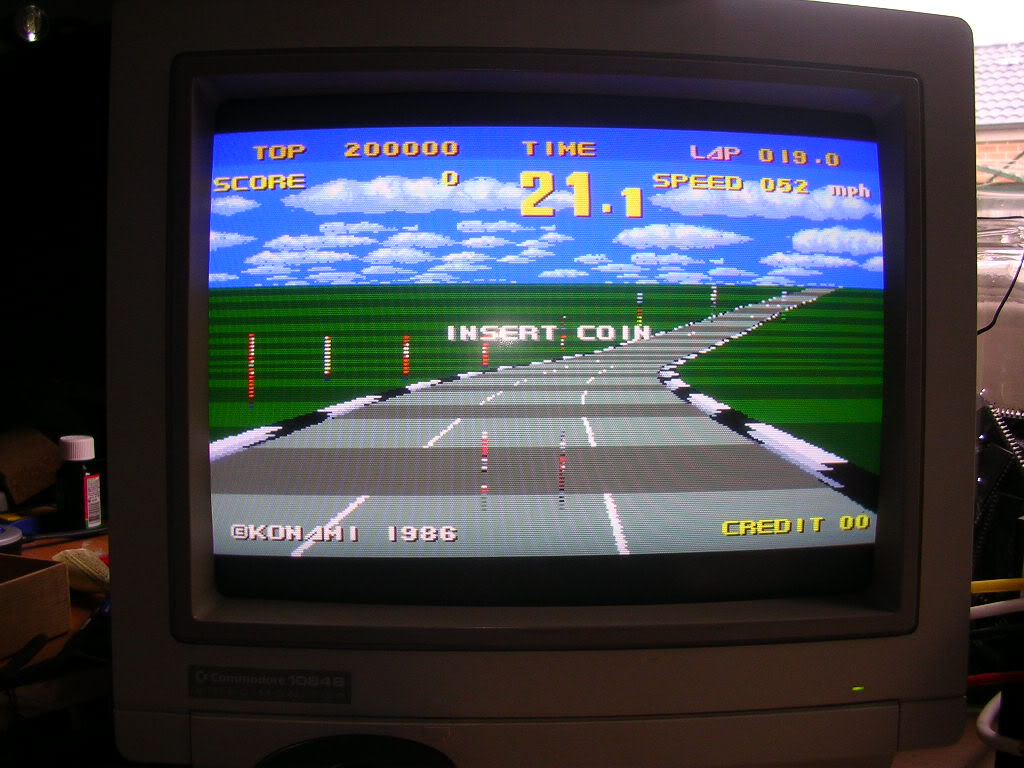
...the sprites are just pillars of dots on an empty road.
Anyway - with all the 157's off the board...

... it should be less likely to fall over again, however by my count last time there were 123 Fujitsu TTLs still on the board, now there are only 111.
Dya feel lucky Troy?
